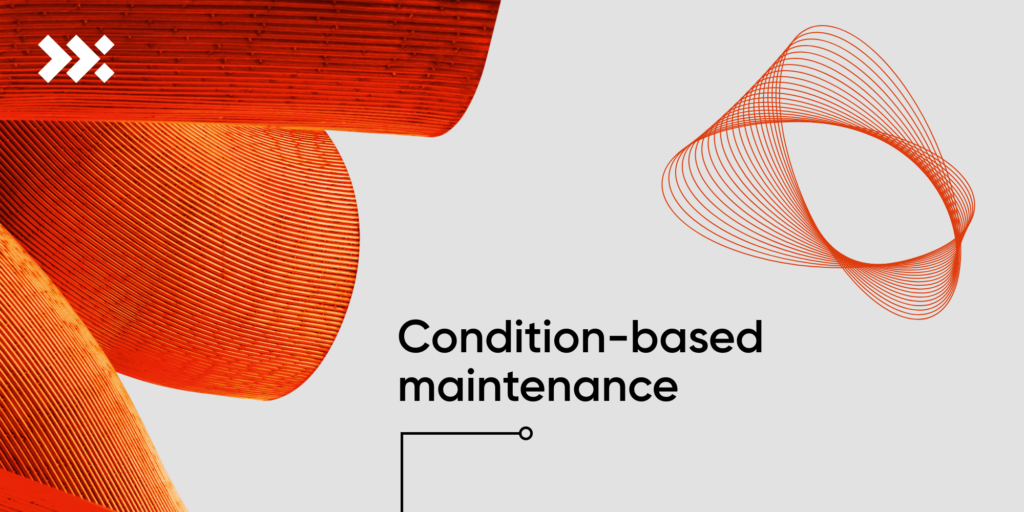Key takeaways:
- Most companies have predetermined times set aside for maintenance, regardless of the condition of their rail wagon, container, or loading machinery.
- Condition-based maintenance means no wasted labor hours, optimized maintenance intervals and reduced unscheduled downtime.
- Condition-based maintenance software is the only way to guarantee full visibility into the condition of container assets.
- Nexxiot’s solutions mean metrics like temperature, vibration levels, orientation, and interference can all be logged in real-time, giving you full ownership of your assets.
Currently, most companies have predetermined times set aside for maintenance. This occurs regardless of the condition of their rail wagon, container, or loading machinery. The likelihood of any of these assets experiencing some sort of failure is largely unknown. However, this is not the only approach to maintenance that organizations can adopt.
Condition-based maintenance, for instance, monitors the condition of a physical asset to determine when and what kind of maintenance needs to be carried out. On a basic level, there are several examples of condition-based maintenance that are commonly used to improve the performance of certain assets. These include:
- Temperature monitoring – Measuring the temperature of your assets can be a highly effective way of determining when maintenance needs to be conducted. Many types of machinery can overheat as parts begin to break down and cooling systems falter. If left unattended, this temperature increase can lead to a serious failure or even a fire.
- Pressure gauges – Monitoring pressure levels can inform maintenance teams of potential leaks before they occur. Many companies that use piping and liquid systems as part of their operations employ pressure sensors in some form.
- Changes in vibration levels – Analysing vibration frequencies is another way of predicting when maintenance will be required. Over time, moving parts will start to malfunction, whether it’s due to a slightly bent shaft or a belt slipping out of place. This will affect the vibration levels within the system and inform maintenance teams of potential problems ahead of time.
The four types of maintenance
Generally speaking, there are four different maintenance approaches favored by businesses. Aside from condition-based maintenance, these are known as corrective, preventive, and risk-based maintenance.
With corrective or run-to-failure maintenance, assets are allowed to continue running until some failure event occurs – only then is maintenance carried out. This strategy relies on organizations having timely access to engineering staff and the spare parts needed to correct the discovered faults. It is also reliant on any costs sustained during unpredicted downtime being lower than the investment required to implement a more strategic maintenance program.
Preventive maintenance, meanwhile, is a proactive approach, where maintenance is carried out as part of a predetermined schedule. While this strategy does reduce asset failures and the likelihood of unplanned downtime, it can be labor-intensive and does not come with any guarantees against operating faults. Finally, risk-based maintenance integrates analysis and testing from preventive maintenance strategies to gain a picture of the asset conditions within a given system. This allows maintenance to occur when abnormal values or irregular performances start to be recorded.
How you can employ condition-based maintenance
Unlike the other common maintenance strategies, condition-based maintenance means that assets are only restored or repaired when they need to be. Unlike with preventive maintenance, there are no labor hours wasted through the maintenance of equipment that remains in full working order. What’s more, condition-based maintenance optimizes maintenance intervals and reduces the likelihood of unscheduled downtime and the associated collateral damage that this can cause to other assets.
In light of Industry 4.0 and the vast quantities of data that are now being produced in a corporate environment, condition-based maintenance software is becoming increasingly popular among many businesses. These digital platforms use wireless sensors to gather real-time data that add visibility and accountability to maintenance schedules.
Maintaining the global supply chain
Supply chain stakeholders are among the organizations that stand to gain the greatest benefit from condition-based maintenance. Whether they predominantly ship goods over land, sea, or air, gaining visibility into the condition of their container assets is hugely beneficial. Although ISO tanks offer good levels of reliability and leaks are extremely rare, they cannot offer any guarantees regarding the environment in which goods are being transported. That can only be provided through condition-based maintenance software.
With the right digital solution in place, metrics like the temperature, vibration levels, orientation, and interference can all be logged in real-time before being communicated to a connected cloud platform. Alerts can be issued when metrics go beyond specified boundaries and stakeholders can plan corrective measures to keep their assets in the best possible condition. With condition-based maintenance software, organizations can eliminate manual logging, monitor quality more accurately, and provide proof for SLAs. Without it, they are left dealing with logistics blind spots, only receiving updates on their tank containers when they arrive at the next checkpoint.
With other maintenance strategies, quality issues, defects, and failures are left untended to either until some predefined point in time or when a serious issue occurs. What’s more, without condition-monitoring sensors in place, quality issues can easily be missed or recorded incorrectly as part of a time-consuming manual process. However, condition-based maintenance, also known as CBM or predictive maintenance, lets suppliers and logistics firms prove quality and compliance without the use of a single piece of paperwork.
At Nexxiot, our condition-based maintenance solution offers complete visibility over the entire supply chain. Instead of being kept in the dark, our wireless sensors let you define the metrics that are important for your assets, determine acceptable thresholds, and access real-time and historic data remotely.
By automating the monitoring process, you can enhance efficiency, lower costs, and verify the arrival of your assets – no matter how they are transported. Take full ownership of your assets. Get in touch with Nexxiot today.
